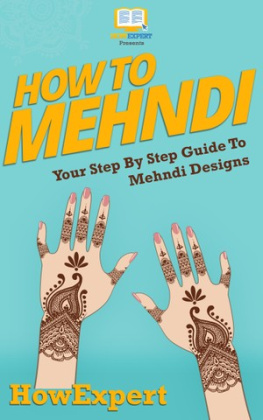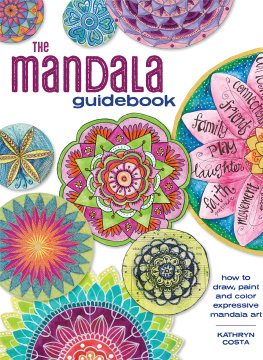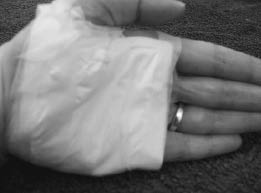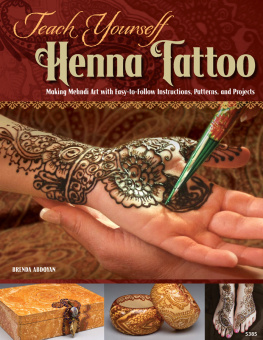
The author and publisher have provided this e-book to you for your personal use only. You may not make this e-book publicly available in any way. Copyright infringement is against the law. If you believe the copy of this e-book you are reading infringes on the authors copyright, please notify the publisher at: us.macmillanusa.com/piracy.
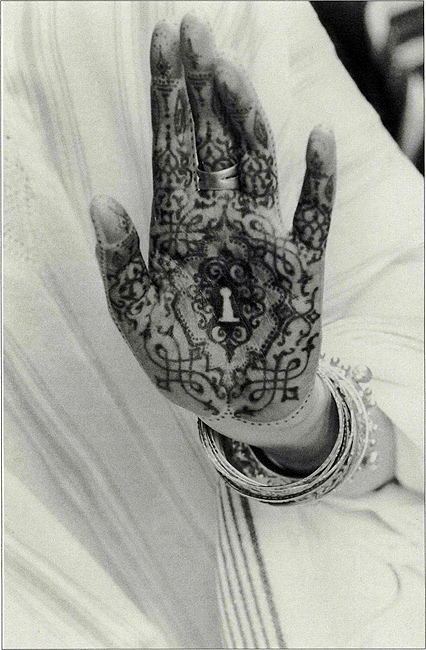
Contents
What I tell you is not a secret.
The secret is in you.
FA - YEN
ACKNOWLEDGMENTS
This book is the result of the talents and efforts of many people, and several years of hard work. I would like to thank all of the artists who generously gave of their time and expertise, sharing recipes and techniques, and letting their work be photographed for this book. Many of these artists are a part of the Mehndi Project, and I consider it a great privilege to be working side by side with them. I would also like to thank my first teacher, Rani Patel, with whom I had hoped to be writing this book.
The Mehndi Project began in August, 1996 at the Bridges + Bodell Gallery thanks to the generosity and faith of gallery owner, Margaret Bodell and the eight gifted photographers involved in this project from the start. During the month-long exhibition of photographs, hundreds of people of all ages and nationalities came to be painted and to learn more about how it is done. I would like to thank all of the people who helped to bring this project forward and give henna painting a new home in the West.
The Mehndi Project started a wave of international attention that made focusing on writing seem nearly impossible, due to the constant demands on my time. Without the help of Eric Feinstein, Tracey Eller, and Stephanie Rudloe, I would not have been able to do this book. I would also like to acknowledge the extraordinary support I received from the entire team at Witherspoon and Associates, especially Maria Massie, who was there for me at every turn. Their graciousness and professionalism have been truly inspiring. Many thanks to my editor, Marian Lizzi, whose patience, sensitivity, and diplomacy made every step of this process more pleasant and manageable.
I would like to thank the following people for their generous contributions which helped make this book a reality: Roy Kaufman, Mohamed Elmaarouf, Sterling Rome, Nishit Patel, Paul Maher, Caro Barlow, Pamela Pollack, Henry Yee, Lucy Grealy, Jenny Dworkin, Ilene Staple, Jamila El Alaoui, Sangeeta Patel, Urvi Patel, Robert Tardio, Susan Lentini, Frank Ockenfels, Jill Waterman, Karl Steinbrenner, Audrey Davenport, Theo Coloumbe, Gordon Lange-Kelley, Jessica Shokrian, Judy Ann Olson, Huggie Foote, Carlos Sanches, Michael Ackerman, Serena Jost, Vinnie Panizo, Sandra Rodger, Marilyn Cvitanic, Aziza Riad, Kim Lenart, and Leigh Brown.
I would also like to thank the following people: Judith Hooper, Denise Kerr, Stephen Silverman, Victoria Mercuri, Gay Young, Dawn Davis, Latif, Kozmat Mohamed, Brahim Fribgae, Ruth Taveras, Suesan Stovall, Carrie Ashby, Fiona Stevenson, Dunya, Cybele Kaufman, Meagan Gannett, Kris Dikeman, Nancy Matsumoto, Jenny Liu, Adelaida Gabiria, Mauela Amzallag, Lynelle George, Therese Gambacorta, Linda Pastorino, Dina Emerson, Antoinette Rowe, Stephan Zaklin, Halima Taha, Nacer El Alaloui, Kathy Lutwak, Rick Mercuri, Ranuka Patel, Howard and Rosalind Feinstein, Jonathan Feinstein, Amadeo DAmado, Hank Cochrane, Sumita Batra, Alison Rose Jefferson, Rick Becker, Rabeah Ghaffari, Randolyn and Angus McCullough, and to the folks at the Queens Council of the Arts, Park Slope Copy, Valeries, Sordis, Akbar, and Leon at the Paper Place, and most of all the Community Bookstore in Park Slope for providing me with coffee and silence.
INTRODUCTION
This book is intended to give the reader what I was looking for in bookstores and libraries when I first became fascinated with henna painting. There was so much I wanted to know. In the past two years I have heard many others ask the same questions that I had asked: Can I do it? How? Where can I have it done? Is it really good for me? Where does it come from, and what is it all about? Is it the same henna that people use in their hair?
Like everyone else, I was looking for basic information, and there was something oddly elusive about the entire subject. My first question quickly became: Why is it so hard to find out about this thing?
The attempt to answer this question has greatly affected my entire experience in researching this topic. The answer is complex and has to do with the following subjects: women, eroticism, mysticism, privacy, religion, sacred ritual and ceremony, matrimonial and romantic love, folklore, and superstition.
My long search for information about mehndi became as interesting as the art itself, and the reasons why its NOT known are part of what must be explored if one is truly to grasp its significance.
In his book, Art of Rajasthan, written in 1951, Jogendra Saksena made a passionate appeal to the people of India to preserve this uncommon art and protect it from extinction. He wrote: For, unless a fact, which is obscure and shrouded in mystery is uncovered and explained clearly, it becomes difficult to convince [people] about its values and utility.
In this book, Im handing over a great deal of what Ive been able to find out. On the back of Saksenas book are many flattering comments and reviews. The one at the top was written by Dr. Stella Kramrisch more than twenty years ago and reads as follows:
The hurried mechanized life of the present has little time for such ritual, visual celebrations. The practice of [mehndi] will not survive. However, the knowledge of its form should become as widespread as that of the great monuments of India.
The practice of mehndi has survived. It is my hope that this book may play some small part in its timeless history.
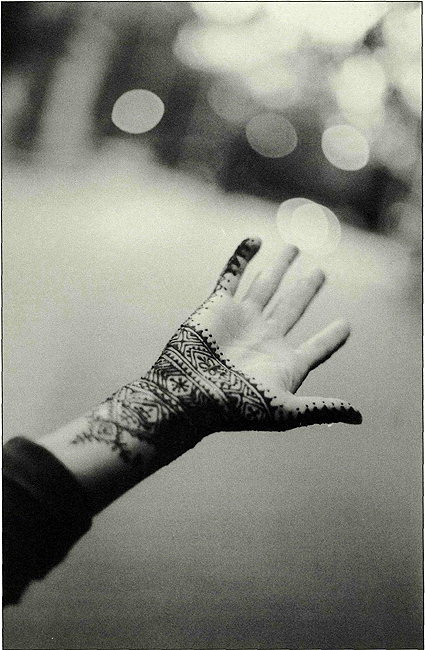
CHAPTER ONE
What Is Mehndi?
Mehndi is the word in Hindi used to describe henna, henna painting, and the resulting designs. Henna is a plant best known to us as a natural product used to color and condition the hair. Henna painting is an ancient cosmetic and healing art whereby the dried leaves of the henna plant are crushed into a powder, then made into a paste that is applied to the body to safely dye the skin. This is done in elaborate patterns and designs, traditionally on the hands and feet. The result is a kind of temporary tattoo, often reddish in color, which will last anywhere from several days to several weeks. The process is absolutely painless and in no way harmful to the skin. In fact, henna is said to condition the skin as it beautifies the body.
Mehndi is practiced in many parts of the world. From the deserts of North Africa to the villages of northern India, magnificent designs blossom and vanish upon the hands and feet of women as they have for thousands of years. Most commonly associated with romantic love and the ritual of marriage, henna designs are an integral part of bridal adornment in Hindu, Moslem, and Sephardic traditions.
Mehndi is an art form that traditionally has been practiced exclusively by women. In North Africa, Asia, the Middle East, or any Indian or Moslem community, you will find women who decorate themselves with henna. It is taught and practiced largely in the oral tradition, with recipes and patterns passed from one generation to the next. Henna designs may be used in the East to celebrate a special occasion, much the way one in the West might bake a cake or a favorite holiday food. Its that natural and that integral. But while mehndi retains an aura of festivity and well-being, it remains a sacred practice intended not just to beautify the body but to invite grace and good fortune into ones home, ones marriage, and ones family. It is a kind of talisman, a blessing upon the skin.
Next page

